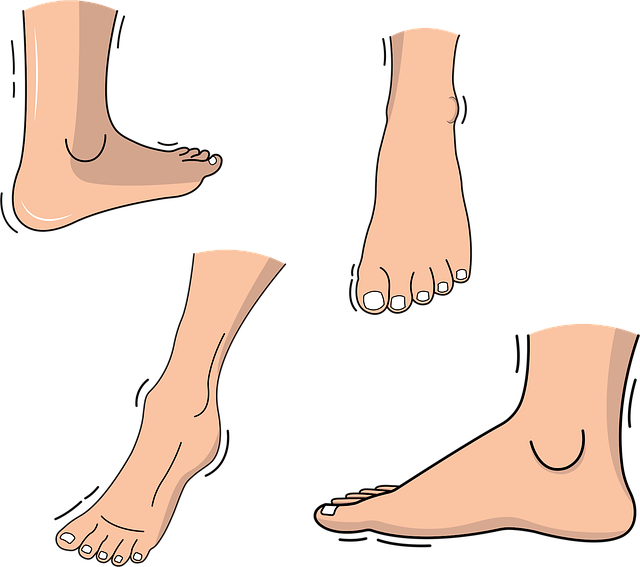Skin tags can recur due to genetic predisposition, friction from clothing, underlying skin conditions, and hormonal changes. Proper post-care after removal, including cleaning, protection, and monitoring, is crucial to prevent recurrence. A healthy lifestyle with exercise, balanced diet, hydration, and smoking cessation also aids in prevention. Regular check-ups at specialist clinics enable early detection and management of new or recurring tags through comprehensive skin tag removal care.
Skin tags, though harmless, can be unsightly and bothersome. After their removal, preventing recurrence is essential for maintaining clear, healthy skin. This comprehensive guide explores the root causes of skin tag regrowth, offering practical tips for post-removal care, lifestyle adjustments, and regular check-ups to ensure long-term prevention. By understanding these strategies, you can bid farewell to skin tags effectively.
- Understand Skin Tag Recurrence Causes
- Post-Removal Care: Essential Practices
- Lifestyle Changes for Long-Term Prevention
- Regular Check-Ups: Early Detection Key
Understand Skin Tag Recurrence Causes

Skin tags can recur for various reasons, even after what seems like a comprehensive skin tag removal care routine. Understanding these causes is vital to preventing future growths. One primary factor is genetic predisposition; if you have a family history of skin tags, chances are higher that you’ll develop them too, and they may even be more prone to recurrence.
Another significant cause is friction or irritation at the site of previous removal. This could be due to clothing rubbing against the area, especially in areas with folds like underarms or necklines. Additionally, certain skin conditions or hormonal changes can trigger skin tag development. For those seeking private skin tag removal services, such as those offered at Blackburn Skin Tag Clinic or Nottingham-based providers, understanding these causes is key to managing and preventing recurrence post-removal.
Post-Removal Care: Essential Practices

After undergoing any skin tag removal procedure, including those offered by services like private skin tag removal Gillingham, Manchester, or Nottingham, proper post-removal care is essential to prevent recurrence. This involves keeping the treated area clean and moisturised to aid healing and reduce irritation. It’s crucial to follow the instructions provided by your specialist, as they may recommend specific cleaning solutions or bandaging techniques tailored to your case.
Avoid scratching or touching the area, even if it feels itchy. This could disrupt the healing process and introduce infections. Also, be mindful of sun exposure; protect the treated skin with sunscreen to prevent hyperpigmentation. Regular monitoring is key; inspect the area for any signs of new growth or unusual changes, as prompt action can help prevent further complications.
Lifestyle Changes for Long-Term Prevention

Maintaining a healthy lifestyle is an integral part of comprehensive skin tag removal care and preventing recurrences. Regular exercise and a balanced diet are key; staying active boosts circulation, which helps to eliminate toxins from the body and keep the skin clear. A nutritious diet rich in vitamins and minerals supports overall health and aids in healing processes. Additionally, keeping yourself hydrated by drinking ample water is beneficial for skin health and can help prevent tags from forming again.
Consider this as a long-term commitment to your skin’s well-being, similar to following a private skin tag removal guildford or preston specialist’s advice. Avoiding certain habits can also make a significant difference. For instance, quitting smoking and limiting alcohol consumption can reduce the likelihood of skin tag regrowth. Regularly examining your skin and seeking prompt attention for any new tags or changes in existing ones is advisable. These preventive measures, combined with effective removal methods, can ensure healthier skin and minimize the chances of recurrence.
Regular Check-Ups: Early Detection Key

Regular check-ups are an integral part of any comprehensive skin tag removal care routine. While successful removal ensures that the tags are gone, they don’t prevent their return. It’s akin to maintaining a house—even after repairs, regular inspections are needed to catch potential issues early. Similarly, periodic examinations allow dermatologists to identify any new skin tags or signs of recurrence before they become problematic.
Early detection is key to managing skin tags effectively. For those seeking long-term solutions for skin tag removal, visiting a specialist clinic like the private skin tag removal Southend-on-Sea offers can be immensely beneficial. Such clinics provide expert advice and tailored treatments, ensuring that any remaining tags are removed efficiently, and future growths are monitored closely. This proactive approach can prevent minor inconveniences from escalating into more significant concerns.
Preventing skin tag recurrence after removal involves a combination of proper post-removal care, lifestyle adjustments, and regular check-ups. By understanding the causes of recurrence, practicing essential care practices, adopting long-term prevention strategies, and scheduling routine check-ups, you can achieve comprehensive skin tag removal and significantly reduce the likelihood of future growths.
